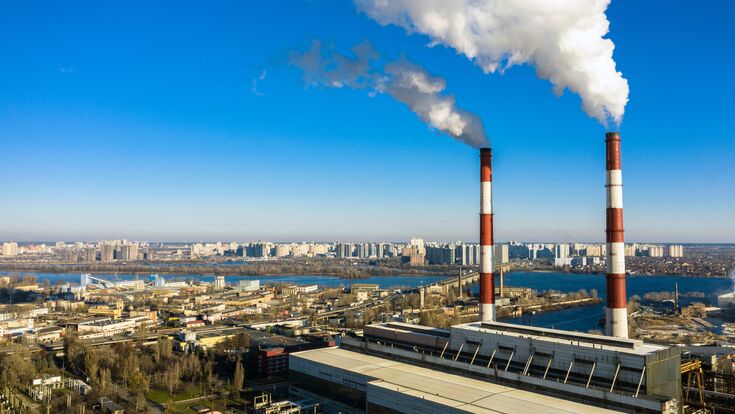Energy from Waste : The State of Waste-to-Energy in the US

It was in 1885 that the first waste incinerator was built in the United States on Governors Island in New York. By the mid-20th century hundreds more were in operation across the country. But when the impacts of the water discharge and air emissions from these plants were discovered in the 1960s, policymakers had to react. The Clean Air Act (CAA) came into effect in 1970 and existing incineration facilities faced new standards that rightly banned the uncontrolled burning of municipal solid waste (MSW) and placed restrictions on particulate emissions. Facilities that refused to install the necessary technology to meet the CAA's requirements were closed.
Nevertheless, the sector started to grow and by the early 1990s more than 15 per cent of MSW were treated in waste incinerators. By this time the majority of the facilities dealing with non-hazardous waste was already recovering energy from the process and had installed pollution control equipment. As data on mercury and dioxin emissions came to light, the Environmental Protection Agency (EPA) enacted the so-called Maximum Achievable Control Technology (MACT) regulations in the 1990s. This meant that most existing plants had to be retrofitted with air-pollution control equipment or shut down. Unlike in Europe the waste-to-energy industry never really managed to take off. There are currently 522 WtE plants in Europe compared to 75 in the US.
In total, waste-to-energy facilities in the United States process 94,000 tonnes of waste per day and produce enough green energy to power 2.3 million homes. The industry is worth $10 billion and employs about 6,000 American workers.
But the market for waste-to-energy (WtE) might get a push as a result of increasing concerns over landfill space, the need to reduce greenhouse gas emissions and the global energy crisis.
Like our content? Subscribe to our newsletters!
WtE as a renewable energy sources
One significant development in the WtE market in the US is the increased adoption of renewable energy sources. WtE is considered a renewable energy source because it involves converting waste into energy rather than relying on fossil fuels. Many states have implemented policies to encourage the use of renewable energy sources, including WtE. In addition, the federal government has provided tax incentives and grants for WtE projects.
There are several WtE policies in place in the US at the federal and state levels. Here are some examples:
- Renewable Portfolio Standards (RPS): RPS are policies that require utilities to generate a certain percentage of their electricity from renewable sources, including waste-to-energy. As of 2021, 29 states and Washington D.C. have implemented RPS, which have helped to drive demand for renewable energy sources, including waste-to-energy.
- Production Tax Credits (PTCs): The federal government provides PTCs for the production of electricity from renewable energy sources, including waste-to-energy. The PTCs are based on the amount of electricity generated and can provide a significant financial incentive for waste-to-energy projects.
- Investment Tax Credits (ITCs): The federal government also provides ITCs for investments in renewable energy projects, including waste-to-energy. The ITCs can provide a tax credit of up to 30% of the cost of the project, which can help to offset the upfront capital costs of building a waste-to-energy facility.
- Renewable Energy Certificates (RECs): RECs are a market-based mechanism that allows utilities to meet their renewable energy targets by purchasing certificates that represent the environmental attributes of renewable energy, including waste-to-energy. Many states have implemented REC programs, which can provide a source of revenue for waste-to-energy projects.
- State Renewable Energy Goals: Many states have set renewable energy goals, which can include waste-to-energy. For example, California has a goal of generating 50% of its electricity from renewable sources by 2030
Advanced technologies
Another development in the WtE market is the increasing use of advanced technologies. New technologies have made WtE more efficient and cost-effective, making it a more attractive option for waste management. For example, gasification technology can convert waste into a synthetic gas that can be used to generate electricity or fuel.
Impact of waste reduction programmes
The WtE market has also been impacted by changing waste management policies. Many states have implemented waste reduction programs, such as recycling and composting, which have reduced the amount of waste available for WtE. However, some experts argue that WtE can still play a significant role in waste management, particularly for non-recyclable and non-compostable waste
Here are some examples of waste reduction programmes:
California: The state has set a goal of reducing waste disposal by 75% by 2020. To achieve this goal, California has implemented a number of programs, including mandatory commercial recycling, organic waste recycling, and a ban on certain materials in landfills.
New York: The state has implemented a statewide recycling program that requires municipalities to develop recycling plans and meet certain recycling goals. New York also has a food waste reduction and recycling program that aims to divert food waste from landfills.
Massachusetts: The state has a waste disposal ban that prohibits certain materials, such as paper, cardboard, and glass, from being disposed of in landfills or incinerators. Massachusetts also has a bottle deposit law that requires consumers to pay a deposit on certain beverage containers, which can be refunded when the containers are returned for recycling.
Oregon: The state has a statewide recycling program that requires all residents and businesses to recycle. Oregon also has a food waste reduction program that encourages residents and businesses to compost food waste.
Washington: The state has a goal of diverting 70% of waste from landfills by 2020. To achieve this goal, Washington has implemented a number of programs, including a statewide recycling program and a food waste reduction program.


